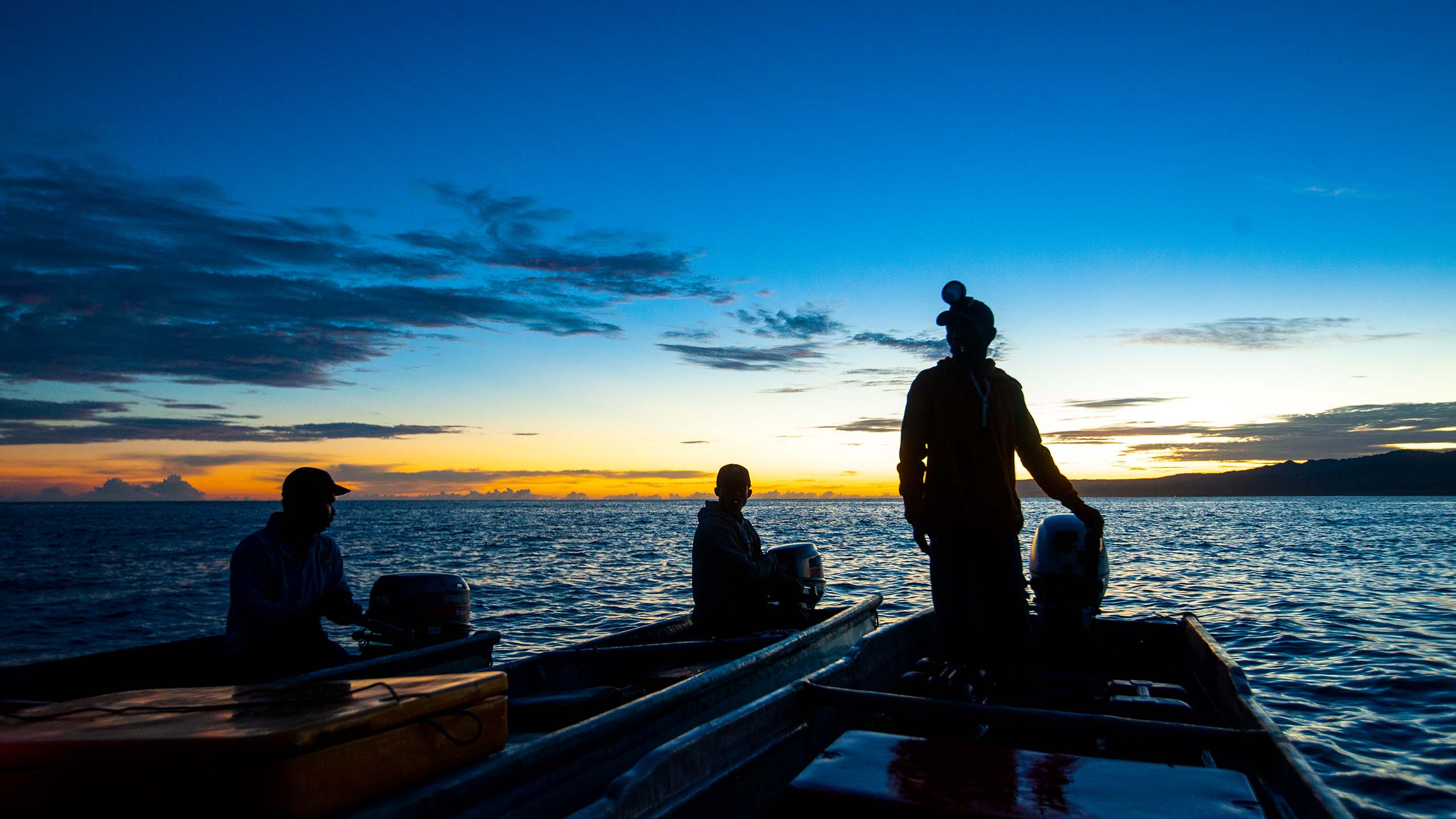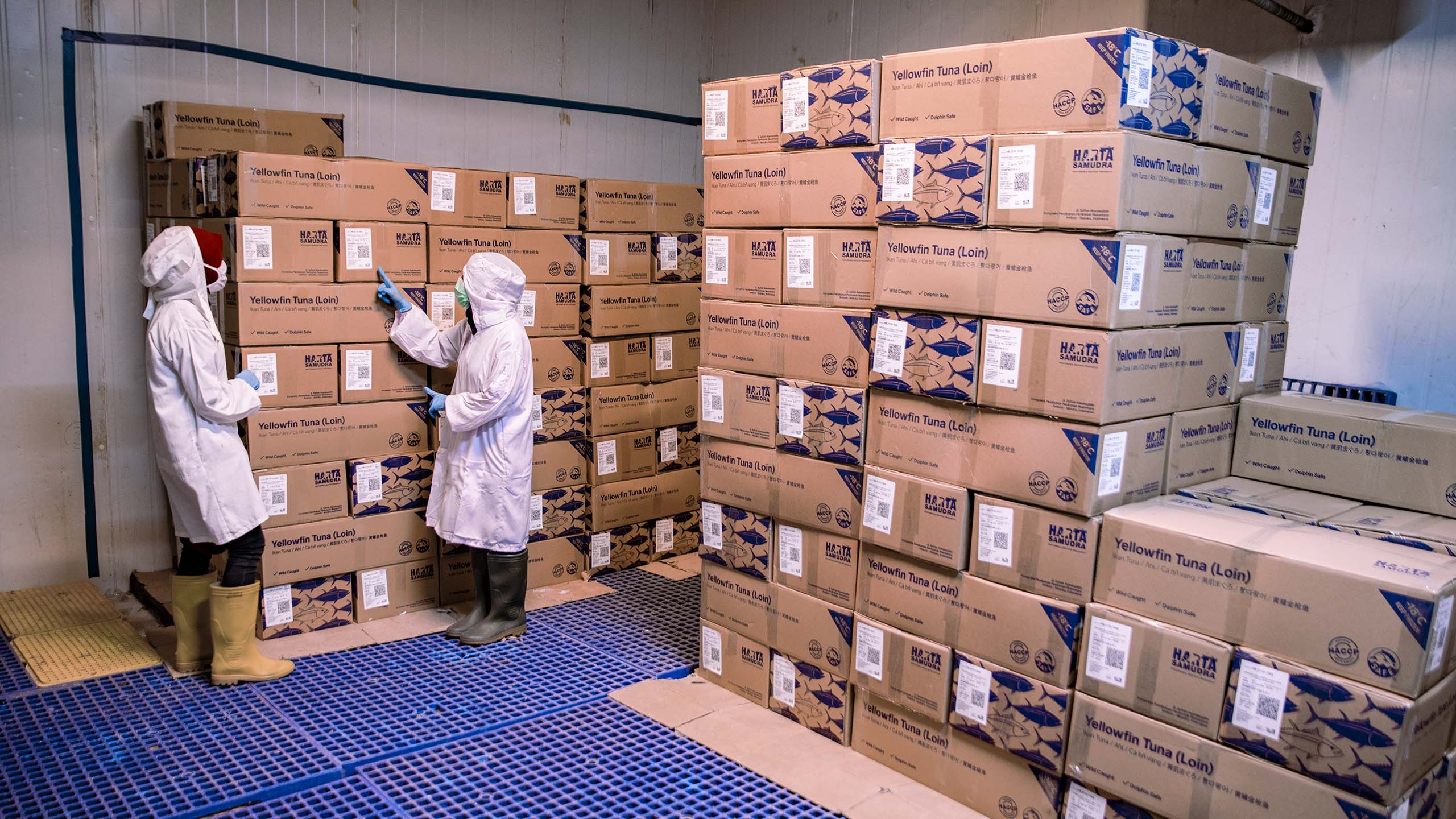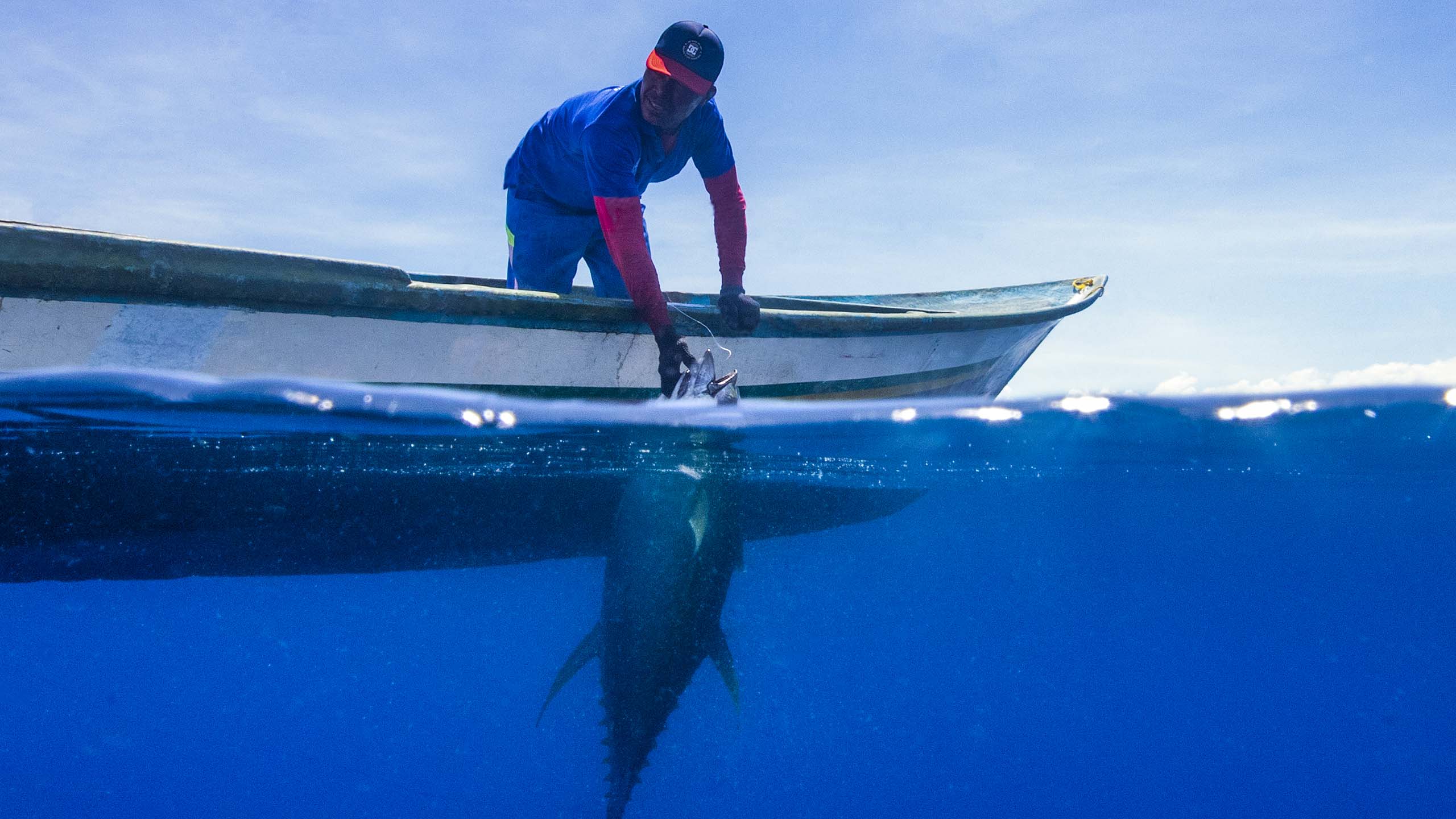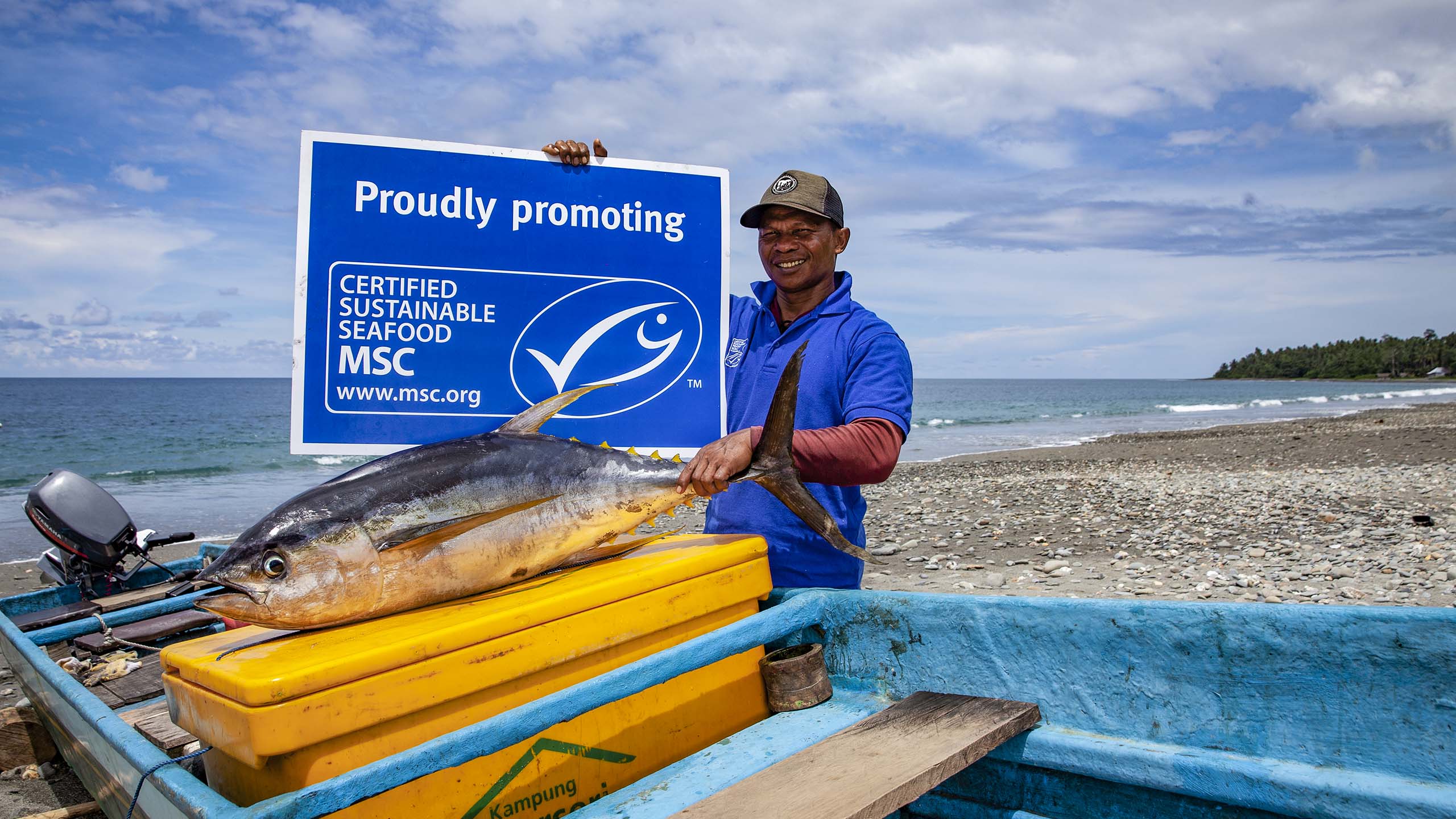As tuna sales rise in North America, it becomes essential to choose MSC certified sustainable tuna to ensure the species is not overfished.
A Day in the Life of a Handline Tuna Fisherman
A typical day of fishing for yellowfin tuna fisherman Umar Papalia begins at 3:30 in the morning, when he heads out to look for the day’s bait. On his small one-person boat, Umar relies on methods much older than radar to locate schools of tuna; he looks for dolphins.
While scientists still aren’t sure exactly why dolphins and tuna are often found together – fishers like Umar have known for decades that if you spot a pod of dolphins, there’s likely a school of yellowfin tuna underneath.
For Umar, the dolphin sightings usually begin around 6:00 or 6:30 AM. That’s when he is able to begin the painstakingly skilled process of handline fishing.
Umar is part of the Maluku Indonesian Handline Yellowfin Tuna Fishery, a small-scale, artisanal fishery in Buru Island, Indonesia. Handline fishing is almost exactly what it sounds like: no poles, no nets, just a person and a baited fishing line.
Handline tuna fishers like Umar use a nylon line with hooks and bait at the end. They wear thick gloves to protect their hands and make it easier to grip the thin line.
Umar then waits for a tuna to take the bait and hauls the fish onto the boat by hand.
These tuna grow quite large, so fishermen often only catch a couple of fish per day.
Umar has been a handline tuna fisherman since 2007. At peak season, he can catch up to four tuna a day – an impressive feat considering yellowfin tuna weigh at least as much as Umar himself! Adult yellowfin can reach over 300lbs in weight.
As a traditional fisherman who does not use technology to fish, not only does Umar need to find tuna by sight, but he also needs to pay close attention to the availability of fuel and bait while at sea.
Sailing anywhere from 10 to 40 miles, the days are long and unpredictable. Tuna can be hard to find, weather can make sailing a small boat challenging, and catching tuna one at a time by hand can be exhausting.
On a typical day, Umar returns to shore with his catch around 7:00 or 8:00 pm.

Before this fishery entered the MSC program, individual fishermen would sell their catch for a small amount of money with no real though for the future.
“We didn’t have any plans. We just fished every day,” Umar said.
Now, MSC certified yellowfin tuna from this fishery can be found throughout Asia, the European Union, and the United States.

More Data Collection Means More Sustainable Tuna to Enjoy
It took a lot of cooperation and collaboration, and over a decade of hard work for this fishery to achieve certification.
Back in 2009, the fishery went through a pre-assessment, which is essentially a high-level review of a fishery’s current management, data collection, and sustainability practices to determine how likely it is that they would achieve MSC certification.
Using the results from this pre-assessment, a local Indonesian nonprofit MDPI created a series of steps to help the fishery improve. In April 2013, the fishery formally entered a Fishery Improvement Project (FIP).
FIPs are ways for fisheries to register their interest in MSC certification and create a plan for entering the program. Often done in collaboration with other businesses, non-profits, or governments, FIPs require fisheries to undergo a pre-assessment, develop an improvement action plan, regularly report on progress, and establish a timeline with a date for starting the official MSC certification process.
In this case, MDPI began establishing ways to improve fishery practices and to collect more accurate catch data, which fishers like Umar are supportive of.
“Now we realize that the data collection is important,” he said. “More data could actually allow us to catch more tuna."

Sustainability and Social Impact Go Hand in Hand
MDPI also helped organize individual fishermen into associations using the Fair Trade USA Standard, which emphasizes improving livelihoods. In October 2014, they were officially certified under the Fair Trade USA Capture Fisheries Standard.
Using lessons learned from the Fair Trade certification process, MDPI continued to implement their FIP and completed another pre assessment in 2018. They then began collaborating with the Ministry of Marine Affairs and Fisheries (MMAF) and were able to enter full assessment in 2019.
In May of 2020, after years of hard work and dedication this artisanal fishery became the first handline yellowfin tuna fishery in the world to meet the MSC Standard for sustainable fishing.
For Umar, adhering to the standard set by the MSC means that tuna will continue to thrive and he will be able to earn a living and counite to provide for his family.
“If we can catch tuna day, but our children in the future cannot, then we should not be fishers,” Umar said. “Because we do not only live for today, but also for the future.”

